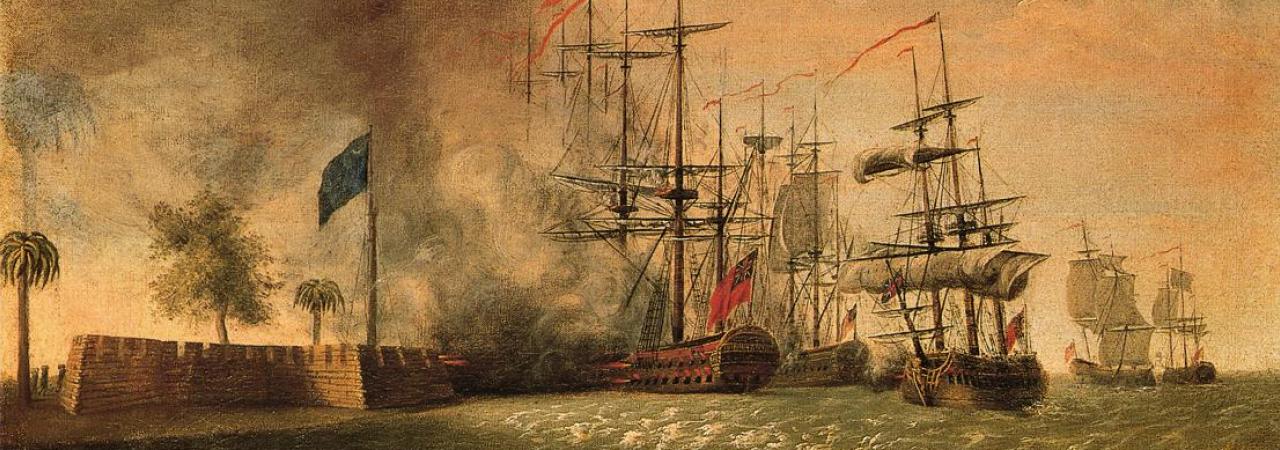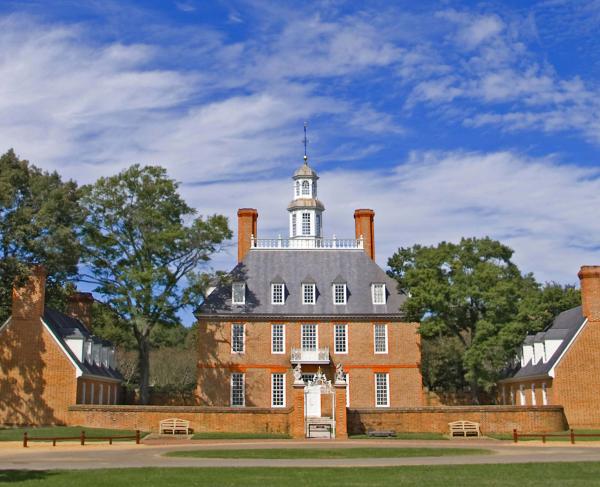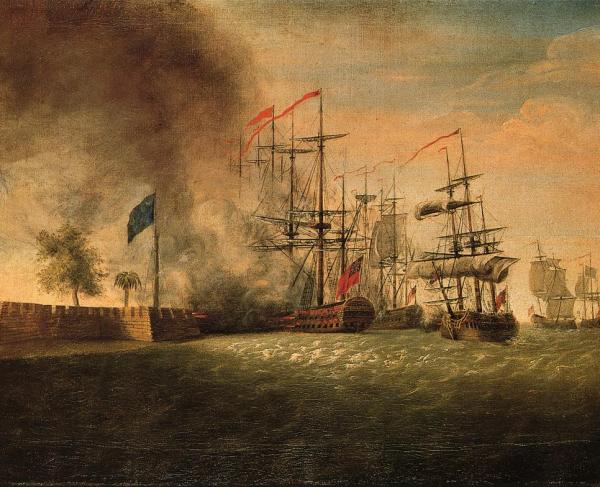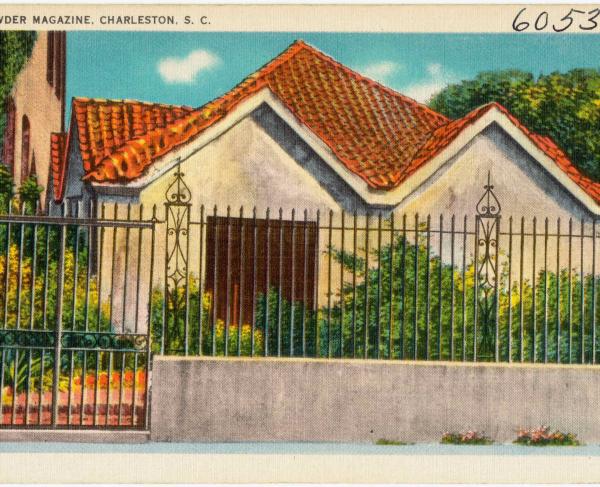
"Sir Peter Parker's Attack Against Fort Moultrie," oil on canvas. Courtesy of Colonial Williamsburg Foundation, Williamsburg, Virginia.
Fort Moultrie's history covers more than 220 years of seacoast defense, from the first decisive victory in the American Revolution to protecting the coast from U-boats in World War II. Major Robert Anderson and eighty-five Federal soldiers occupied the fort, built in 1809 before they moved to Fort Sumter in December of 1860. During the first battle of the Civil War (April 12-13, 1861), Confederates at Fort Moultrie fired on Union troops in Fort Sumter. Confederate forces successfully used both forts to protect Charleston from a combined Union Navy and army siege from 1863 to 1865.
Originally known as Fort Sullivan, Fort Moultrie was constructed in 1776 during the American Revolution. During the war, American general William Moultrie and his South Carolina unit of 435 men took control of Sullivan's Island and built a small fortification to protect Charleston Harbor. The fort was constructed with rows of palmetto logs reaching ten feet high and filled with 16 feet of sand reinforcement. Although the fort was primarily incomplete, the Royal Navy, under the command of Admiral Sir Peter Parker, attacked Moultrie and his men on June 28. The nine British warships surrounded the fort and bombarded it for hours, hoping to gain access to the Charleston Harbor. Although the fort had not been completed, the British cannons could not penetrate the wood, and the giant walls of sand absorbed the shock of the artillery. Moultrie and his men fought back and heavily damaged the British fleet with cannon fire. As the battle commenced, William Moultrie raised a navy-blue flag with a crescent moon with the word liberty sewn into it. On June 28, the damaged British fleet retreated at the end of the day, and Moultrie and his men celebrated Charleston's successful defense. Relieved and elated by the victory, the fort's name was changed to honor William Moultrie and their heroism during the battle. The Continental Army continued to use the fort to protect Charleston, SC, watch for incoming ships from the Royal Navy, and protect commerce ships bringing supplies into Charleston Harbor.
As the American Revolution continued, the British Army targeted the southern colonies, especially North and South Carolina. In 1780, the British launched a three-month siege on Charleston, lasting from March to May. Under the overall command of Benjamin Lincoln, Fort Moultrie was ordered to prevent any British ship from entering Charleston Harbor. Unfortunately, the fort could not block the British, and they sailed right past the defense and into the harbor to fight the Continentals and take the city. With the British fleet surrounding the town, Lincoln and his men were trapped and could not call for reinforcements. On April 21, hoping to preserve his army, Lincoln offered to surrender the city if his men could leave unharmed. British commander Henry Clinton refused to accept these terms and quickly resumed artillery bombardment. By May 8, Clinton demanded that Lincoln surrender unconditionally; Lincon refused, so Clinton ordered the city bombarded with heated shots. As Charleston burned, the Continentals had no choice but to accept the inevitable and surrender on May 12, 1780. The British occupied the city and Fort Moultrie, renaming it to Fort Arbuthnot. Until the end of the war, the British utilized the fort and its access to the Charleston Harbor. When the British officially surrendered in October of 1781, the fort fell back into American hands, where it was temporality disregarded and abandoned.
By the mid-1790s, the United States government remembered the fort and ordered restorations. Into the nineteenth century, the fort suffered from multiple storms and various construction issues. In 1809, the United States government required complete fort reconstruction, and by the end of the year, the five-sided redoubt was home to over forty guns. Used to protect the United States, in 1837, the fort was approved to contain Native American prisoners who fought against the U.S. in the Second Seminole War. Well-known prisoners included Native American leaders like Osceola, who is buried on the fort's sallyport. Maj occupied the fort. Robert Anderson and eighty-five Federal soldiers until 1860. When tensions between North and South peaked, South Carolina seceded from the Union on December 20, 1860, and planned to take the various forts surrounding Charleston with her. Union troops raced from Fort Moultrie to Fort Sumter to save and utilize the stronger defense against rebel forces. South Carolina troops occupied Fort Moultrie and fired upon Fort Sumter under Confederate orders, officially beginning the American Civil War. Throughout the rest of the war, the Confederate soldiers inside the fort fought hard to keep Charleston Harbor out of the hands of the Union.
In the fall of 1863, Union Ironclads surrounded Fort Moultrie and Fort Sumter and continuously bombarded the forts until 1865. The forts received severe damage but never surrendered. When the American Civil War ended in 1865, the skeleton of once a mighty fort was returned to American hands. After the American Civil War, Fort Moultrie was reconstructed and utilized until World War II, where it was used to protect the East Coast from German U-Boats
Related Battles
37
220
5,506
258


